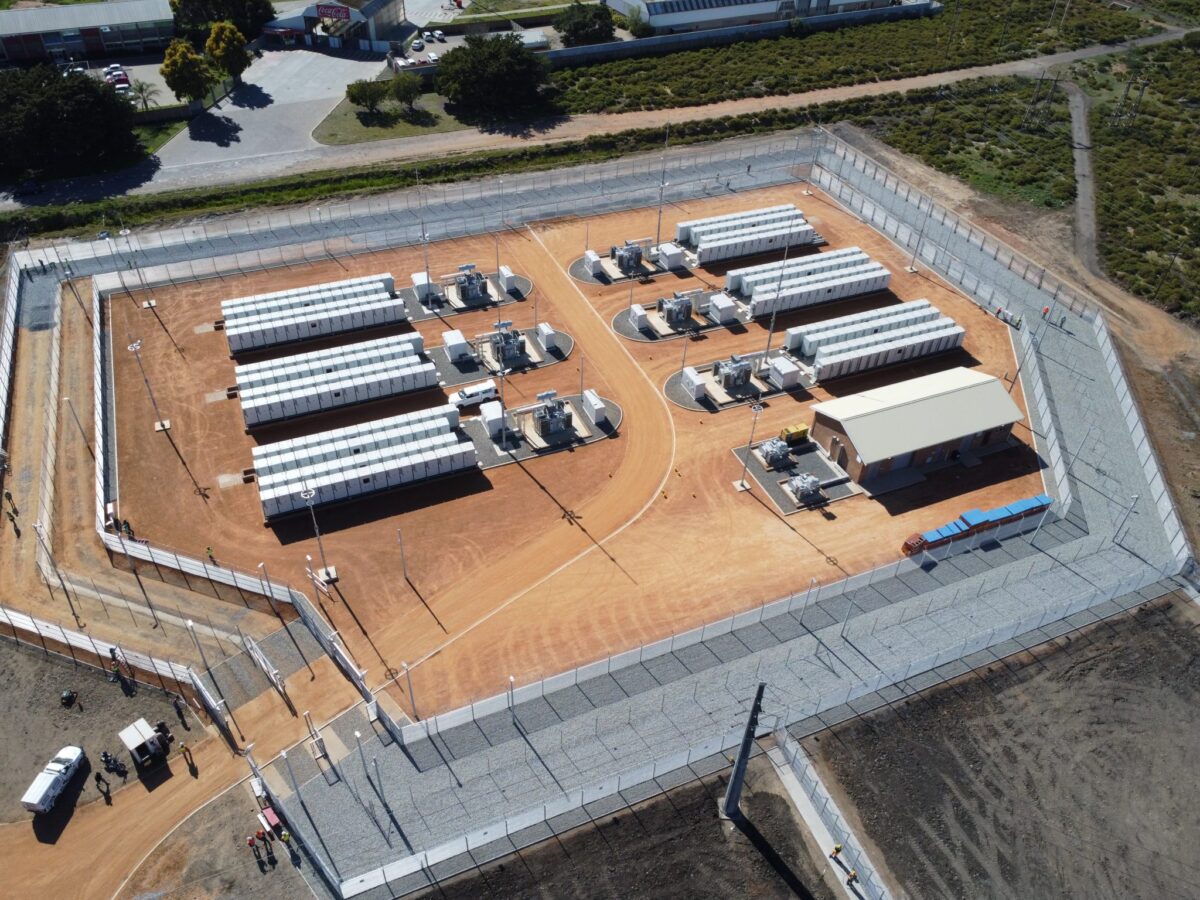South African utility Eskom has switched on a 20 MW/100 MWh battery energy storage system (BESS) in Worcester, Western Cape province,. It has been billed as the largest such project in all of Africa.
Eskom said in the project announcement last week that the Hex BESS project serves as “a direct response to meet one of the urgent needs to address South Africa’s long-running electricity crisis by adding more storage capacity to strengthen the grid while diversifying the existing generation energy mix.”
The five-hour duration BESS is the first project to be completed under Eskom’s flagship battery storage rollout, which was announced in July 2022 to help alleviate the pressure on the national electricity grid.
The buildout will include large-scale batteries with capacities of 1,440 MWh per day and 60 MW of solar. The projects will be implemented in two phases across 12 sites in South Africa.
The first phase will include the installation of around 199 MW/833 MWh of battery storage projects alongside 2 MW of PV, while the second phase will involve the rollout of 144 MW/ 616 MWh of battery capacity and 58 MW of solar.
Eskom’s multi-site project represents the first part of a 500 MW BESS initiative announced by President Cyril Ramaphosa, under the government’s measures to address South Africa’s long-running electricity crisis.
“If we do more of these kinds of projects in other parts of the country, which is what Eskom intends to do, we will see the end of load shedding pretty soon,” Public Enterprises Minister Pravin Gordhan said at the project launch last week.
Load shedding is a measure consisting of controlled power cuts that occur across South Africa on a rotating basis to prevent overloading the grid when the energy demand exceeds energy production. It occurs unpredictably and is predominantly cased by failures of poorly maintained infrastructure and aging coal plants.
“The rollout of these [solar and battery storage] technologies together with a disciplined execution of our Generation Recovery Plan which started in March 2023, and aimed at achieving energy availability factor of 70% by end March 2025, will give the country the most needed megawatts to address capacity constraints,” Eskom said last week.
In 2021 and 2022, Eskom's worst years of load shedding on record, it saw its average energy availability factor of generators falling to 61.7 % and 58.1 %, respectively.
The situation has further exacerbated this year with power outages in South Africa occurring as much as three to four times a day, for between 2.5 to 4.5 hours at a time. In the event of an area outage, the electricity can be off for a few days at a time.
In response to chronic power cuts, residential and commercial consumers in South Africa are expected to add 5 GW of solar capacity this year alone, according to BloombergNEF.
This content is protected by copyright and may not be reused. If you want to cooperate with us and would like to reuse some of our content, please contact: editors@pv-magazine.com.




This is the ideal method for Eskom to minimize the possibility of unmanageable public input entering the grid while maintaining its position as the top energy provider.
As the business development manager, I have succeeded in obtaining the opportunity to be the only representative and supplier of Solargiga photovoltaic modules and Oliter batteries for these kinds of innovation in Africa.
That is the reason I am really enthused about the ongoing developments.
And I am very eager to find opportunities to participate in such innovations.